The Boeing 787-8 hit the tarmac of Montevideo’s Carrasco International Airport with seemingly effortless precision. After a three-day layover in Miami, Fernanda and I finally made it to our sunny, culture-rich destination. This landing was a first for me, not only because I had never been south of the equator but because I had family waiting for me at the gates.
Okay, they aren’t my family, but fortunately, all the same in Uruguay. We immediately met Fernanda’s Abuelos (grandparents) and her Tia (aunt) as we emerged from the arrivals door. They hadn’t seen Fernanda for a couple of years and were thrilled to embrace her. Of course, they knew she was accompanied by her gringo (foreigner, white boy) boyfriend whose Spanish is, well, shit. Thankfully, they were prepared for my inability to communicate in their mother tongue and spoke to me in English. As anticipated, this was the most English I would hear all trip.
We shoulder-carried our bags to the car, bringing only about 35L each. As Abuelo popped the trunk to his 6-speed manual mid-2010 Toyota Corolla, I knew this guy put the G in Grandpa. Being 9,000km away from home, I was still riding in the Corolla’s comfort and style as we hit the streets of Uruguay’s capital.
Swapping CAD for UYU
From Day 1, it was clear that we couldn’t possibly have the complete Uruguayan experience without family - the value they put on home and unity is something I had never seen before. Over the following five weeks, we saw vast Uruguayan countryside, ventured along the continuous beachy coast east of Montevideo, and even crossed over into the bi-national city of Chuí without spending a single Uruguayan Peso on accommodation.
The luxury of family doesn’t stop at accommodation savings, either. Our hosts cared for us by touring us around and arranging asados (BBQ gatherings, for lack of an accurate translation). After we paid for the transportation to any given destination, the only other expenses were up to our discretion. Fernanda and I were determined to repay our hosts, which, as is common with European and Latina families, wasn’t easy. Often, we would take them out for a bite at a local restaurant or cover a big grocery haul.
Together, and not including the flights, Fernanda and I spent CAD $3,984 over five weeks in Uruguay.
Note: that $600 ($300/ea.) of the “Others” category is untracked cash expenses, and roughly $300 is travel insurance.
INFOGRAPHICS AND PICTURES? What do you think? Let me know in the comments.
Whether we were eating at a nice restaurant in La Pedrera, enjoying Uruguayan asado in Montevideo’s Mercado del Puerto, or buying the family’s groceries in La Tuna, all the food was less expensive than in Canada, and even more so when it came to alcohol. Taking advantage of price differences is the beauty of travelling to inexpensive countries, but just because it’s cheap for us doesn’t mean the same for locals.
Being fortunate enough to live in Canada brings the benefit of operating in a relatively strong currency. When we earn and spend in CAD, Canada’s high cost of living makes it seem like our money isn’t all that powerful. When we earn CAD and spend in UYU (or other favourable currencies), the cost of living (in CAD terms) is so low that we can afford the luxuries that seem impossible at home. This doesn’t mean the Uruguayan people experience the same affordability: they make less money than we do and live in a different economic structure. Currency and salary differences considered, it’s hard to say which country is objectively better off, but Canadian access to quality services and resources is higher.
Staying Under Budget
Whether ordering food, requesting an Uber, or shopping, we were actively mindful and openly communicative about spending decisions and tradeoffs. It helped us stay aware of our budget and make fair spending decisions. Emotions and desires can lead us to spend more, and some specific realities of our financial situation made gauging our progress slightly challenging.
Two factors had a decent impact on our financial navigation.
Sharing an account: Since I forgot my international debit card, we had to put all our money in her account. Therefore, I wasn’t as frequently aware of the account balance when making spending decisions.
Spending UYU instead of CAD: To make sense of the cost of something, we had to consider the exchange rate. When trying to understand if something was expensive or what the remaining balance was worth, we had to convert UYU to CAD.
Proudly, Fernanda and I managed to visit Uruguay under budget.
Originally, Fernanda and I budgeted to spend $3,000 and $1,800, respectively. Then, we were gifted $300 each, which we conveniently used as our miscellaneous spending cash. This $300 was unanticipated in the original budget, but for the sake of analysis, I am recognizing it in both budgeted and actual expense totals. Fernanda budgeted $3,300, and I budgeted $2,100.
The most recognizable characteristic of the budget vs actual comparison is the difference in the size of our budgets - the yellow bars. With the understanding that a majority of our expenses would be split 50/50, the unequal budgets show Fernanda’s intention to cover more than her share of the expenses if needed.
When you look at the actual expense amounts (the blue bars), our spending doesn’t play out that way. Instead, our expense totals almost matched: she spent $2,073, and I spent $1,911.
Never mind the accomplishment of landing under budget, Fernanda shows us that you don’t need to spend your entire budget. I appreciate her efforts to achieve spending flexibility through fierce savings efforts and having the control to avoid aimless spending simply because “it’s in the budget”.
Even though I had a couple hundred to spare, my $1,911 went to great use. Not recognized on the personal expenses treemap chart, one of my cash purchases was surfing lessons with Fernanda’s cousin Juan, who teaches in the beach town of La Palmoa. I also bought some things at Decathlon - a low-cost sporting goods store just making its way into Canada. We also did a decent amount of restaurant eating, and can you blame me? The Uruguayan bread, cheese, beef and (Argentinian and Chilean) wine are divine.
We unintentionally spent some time in two big (read: expensive) cities before we landed in Montevideo, which, when added to the total expense calculation, paints a different picture of budget success.
That’s not in the budget…
Toronto and Miami marked their place in my memories of this 6-week excursion. Seeing The Empties play in Toronto, having dinner and drinks with Ben and Ethan and our girlfriends (they have girlfriends… I couldn’t believe it either), and staying with my hometown buddy Evan. It was all a blast, but man, Toronto is EXPENSIVE!
These two cities added $1,059 to the trip.
Could the spending have been dialled back? A bit, especially in Toronto, but Miami was an unexpected reality of travelling on tight layover times, especially to a less frequented destination. Nonetheless, it is ridiculous that two nights of drinking in Toronto cost us $270! Drinking in Canada is a budget’s worst nightmare.
Unfortunately, since I didn’t budget for spending outside of Uruguay, Toronto and Miami drove me over budget by $389 (total cost of $578). What happened was, as plans came together, we realized that it was a convenient time to visit out-of-town friends. I had money in my chequing account from unanticipated income and decided to use it as flexible cash for the unemployed period between Christmas and my departure.
It happened to be super handy in Miami. As with Fernanda’s “over budgeting” approach, I can appreciate the idea of having some extra cash around as a travelling-related “just in case”, but I feel like I took advantage of it when I was in Toronto. The thought was, “It’s not intended for anything else”.
As with every unbudgeted dollar, if you don’t determine where it belongs, something (or someone) else will.
Over, Already?
The evening was upon us as we hit the road to catch our return flight, and the sensational relief of the chilled summer evening set the tone for a comfortable goodbye. Abuelo pulled up to the departure entrance and helped us unload the car. This time around, we added a suitcase stocked with wine, alfajores, yerba, and adobo - all part of the ongoing familial exchange of Canadian and Uruguayan staples.
Tia joined Abuelo and Abuela in waving us off. We exchanged the highly cultural greeting of a kiss on the cheek, delivered a round of hugs, and waved chao. As they left my field of view, I reflected on the unreal experience offered by this small country of 3 million people. We found ourselves caught in a national rivalry between their top football teams, Nacional vs Peñarol, which led us to attend a Peñarol match at Estadio Campeón del Siglo. We bonded over massive hunks of meat, smoked on the parilla and carved on the cutting board where we were welcome to dig in with our hands. Surfing the ever-changing colours of the Uruguayan coastal waters, beaching and napping at the family’s beach house, and snaking my way through a crowded and sprawling street market all gave me an idea of what it’s like to be Uruguayan, even just for a moment.
This experience doesn’t deserve to be overshadowed by a ridiculously long expense and budget analysis, and hopefully, that’s not what happened here. No kidding, the trip was a highlight of my life, and I am eternally grateful for the experience.
Enjoy some pics.






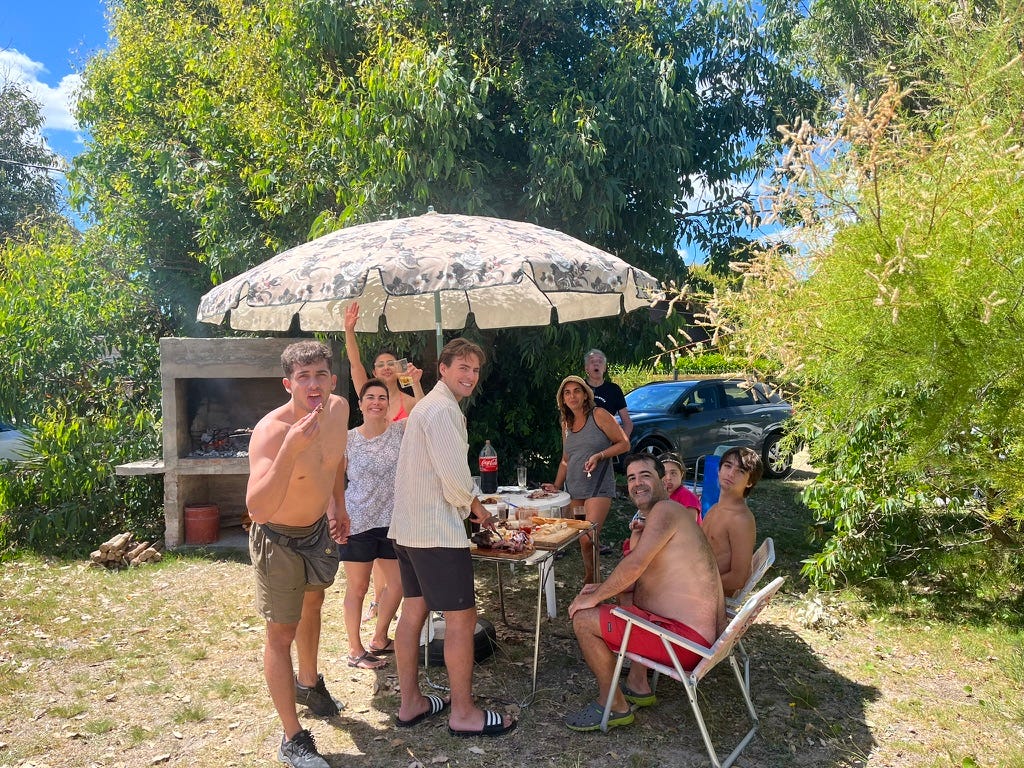


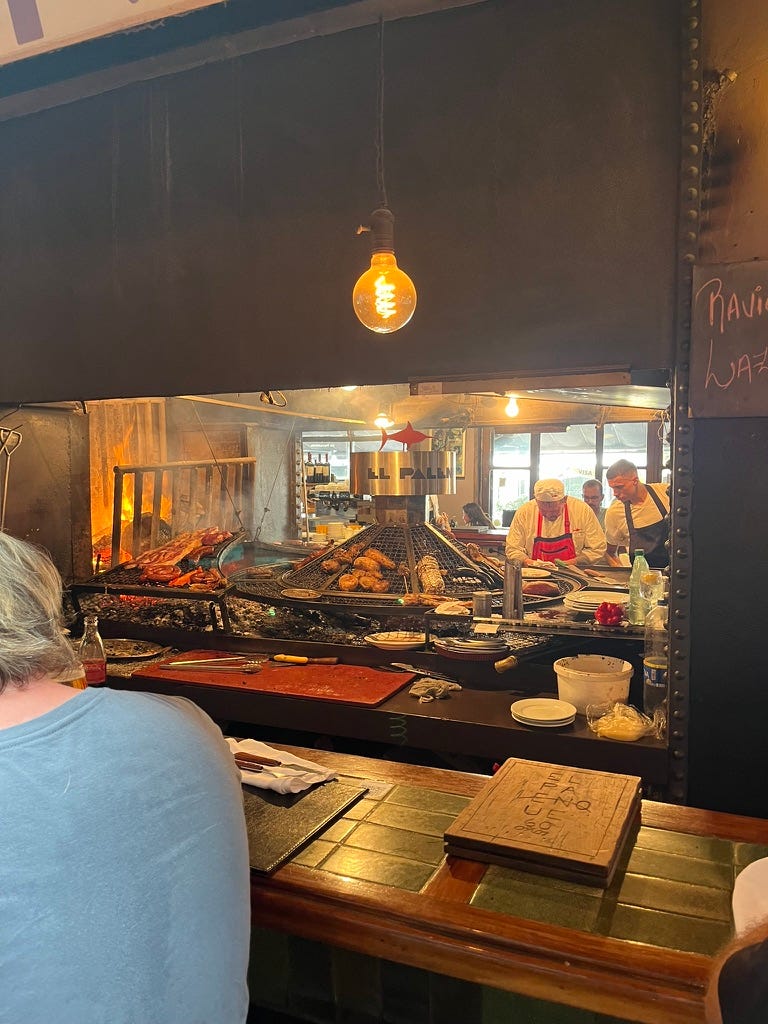

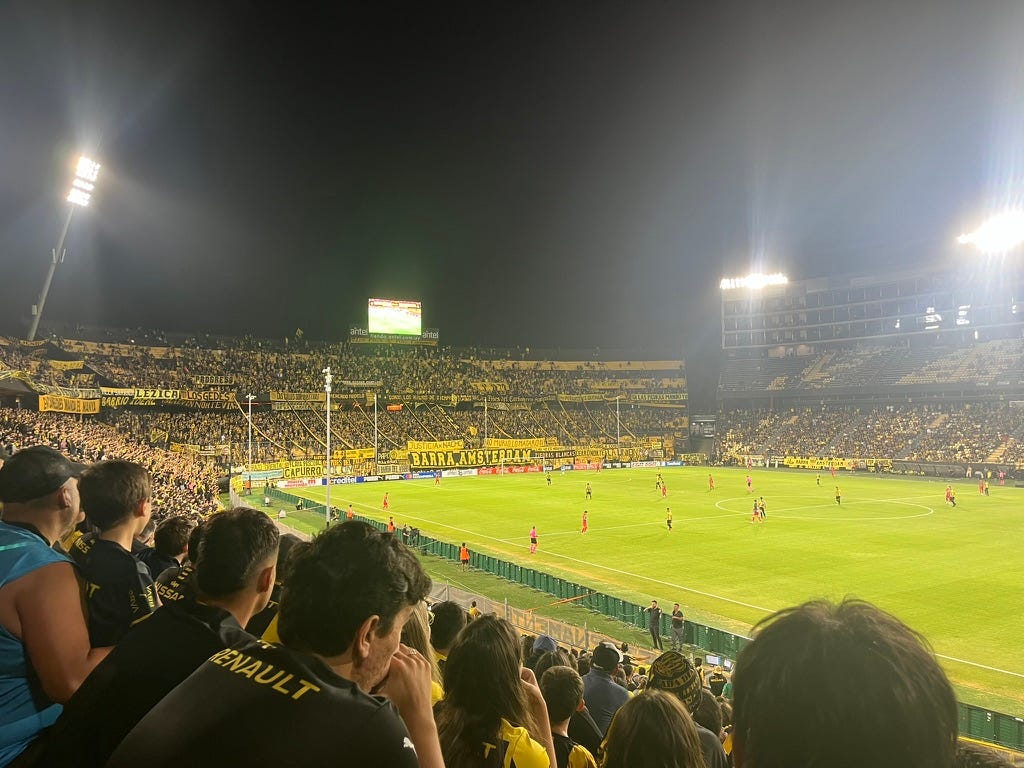
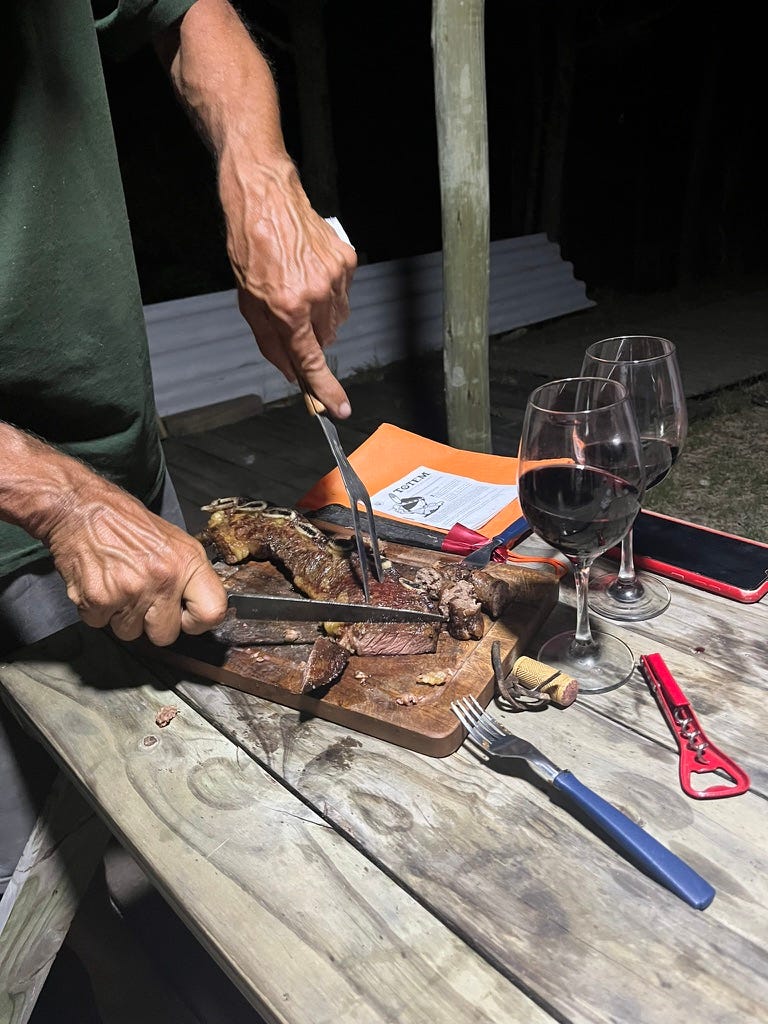

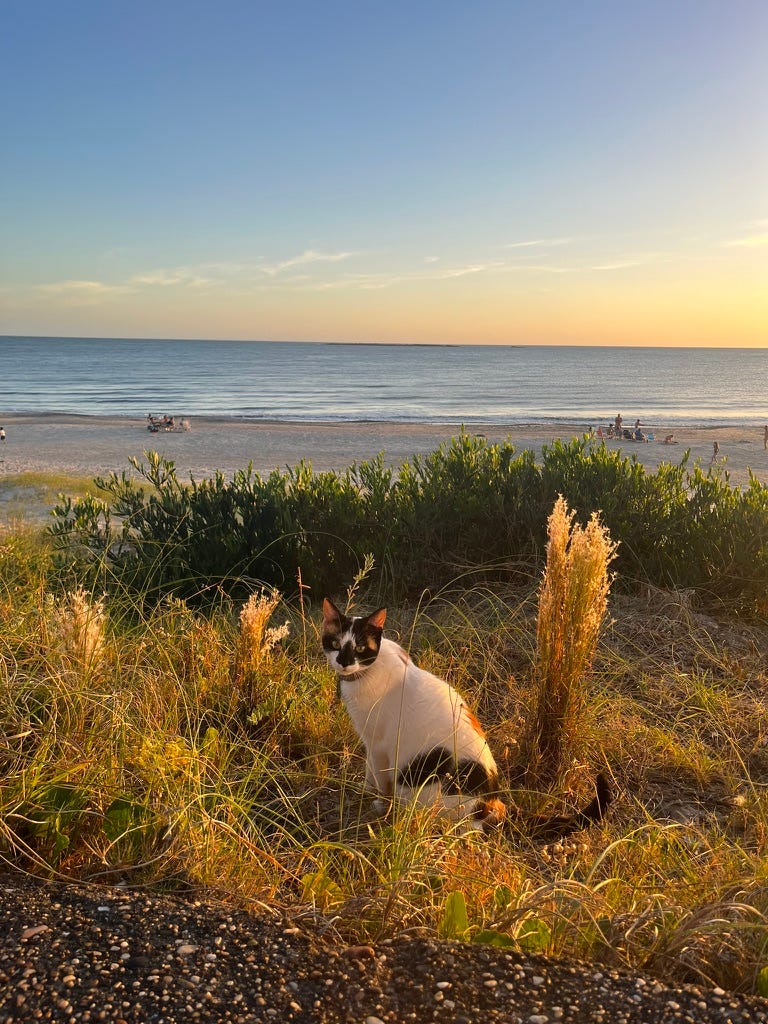
Can't believe you swore in this post. I would boycott the newsletter but I suppose the great writing, graphs, and pictures make it it worth it ;)